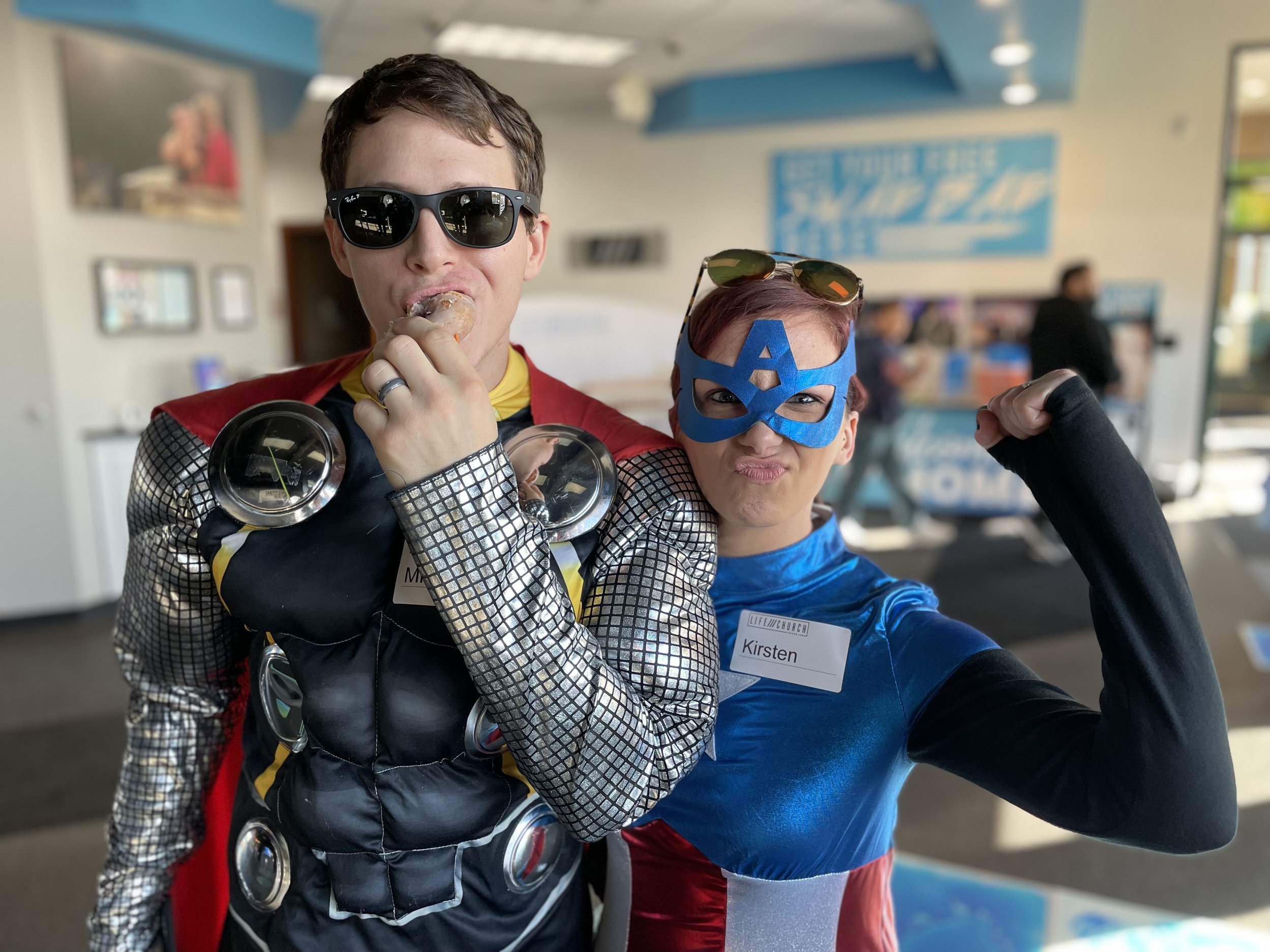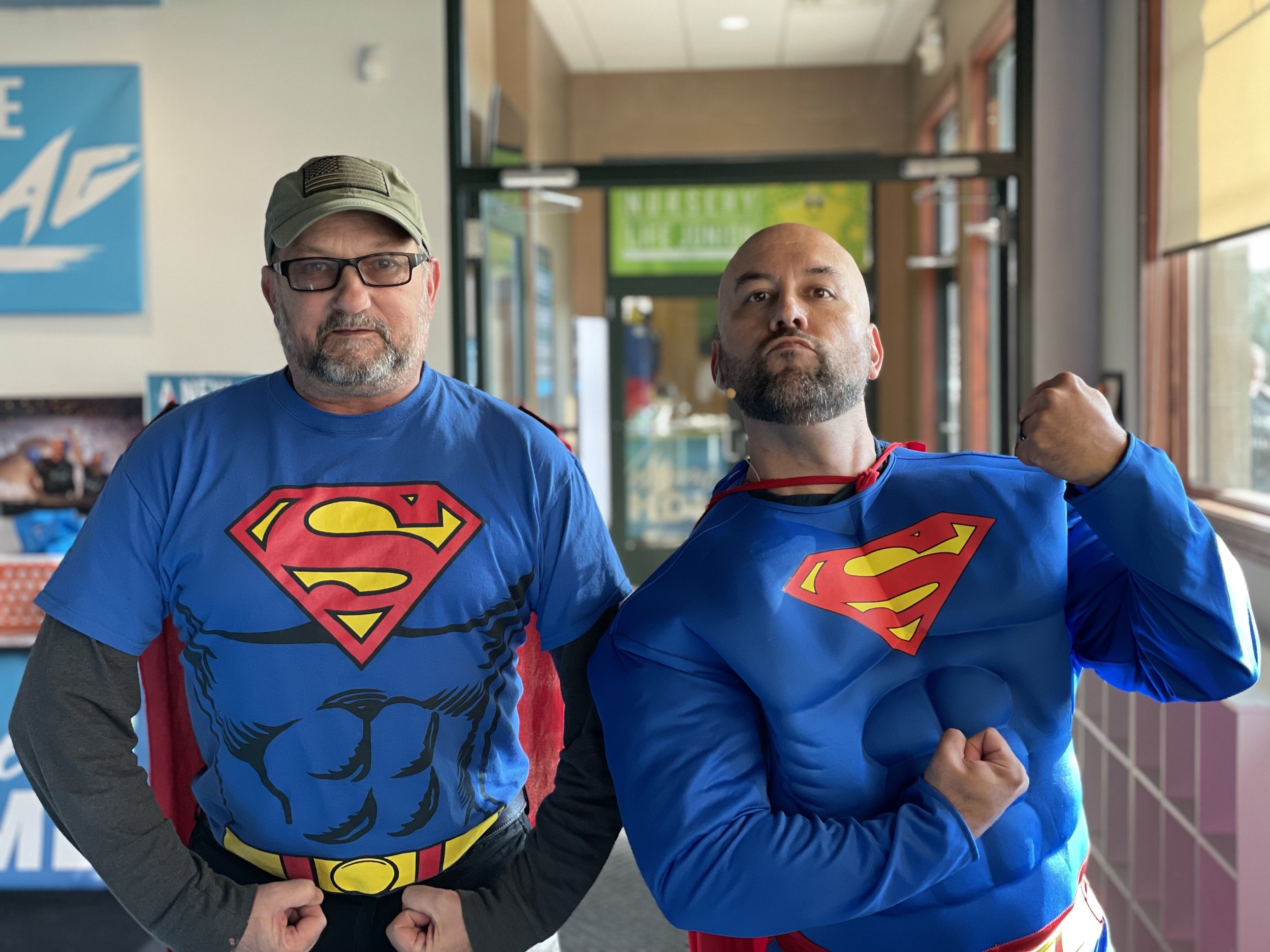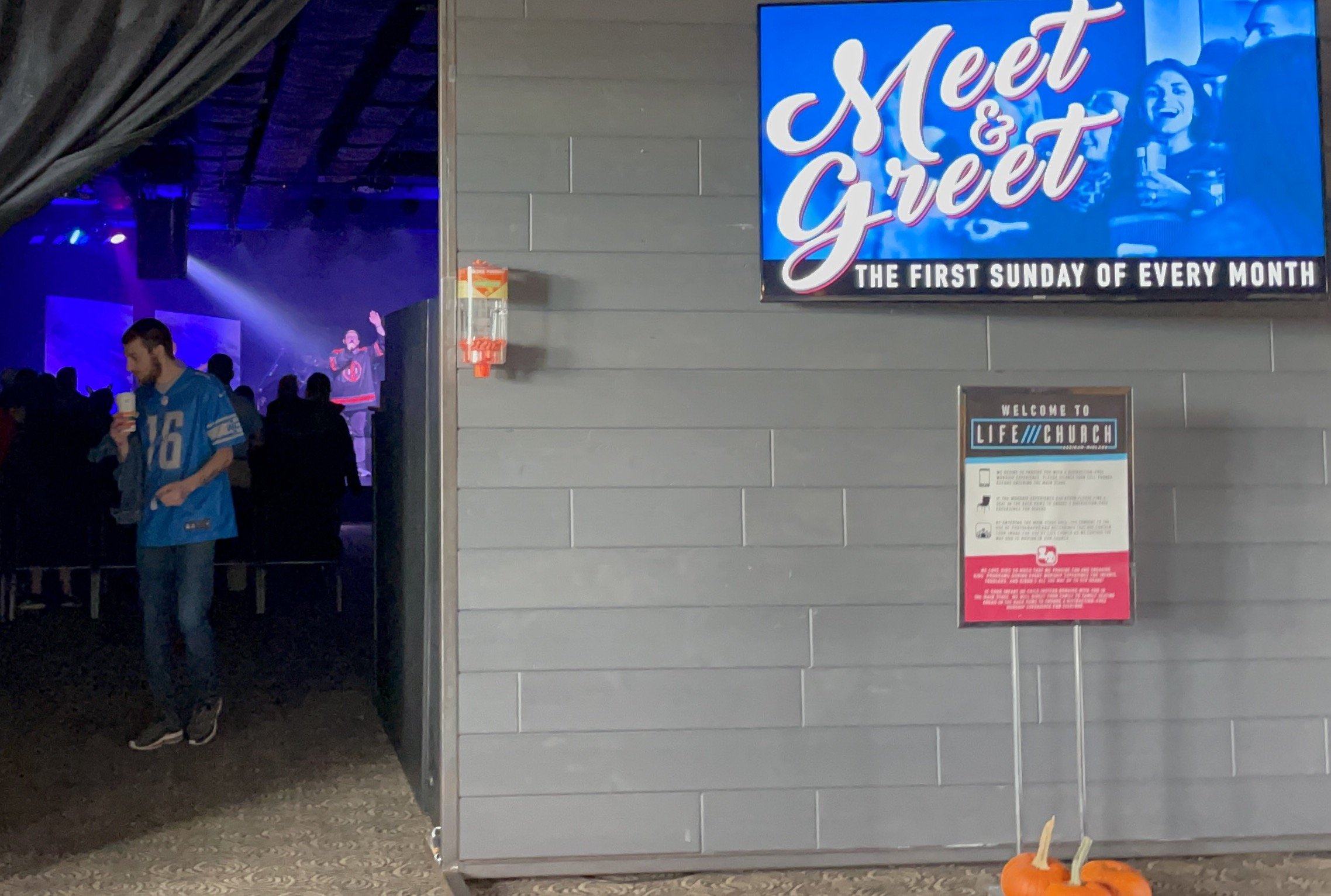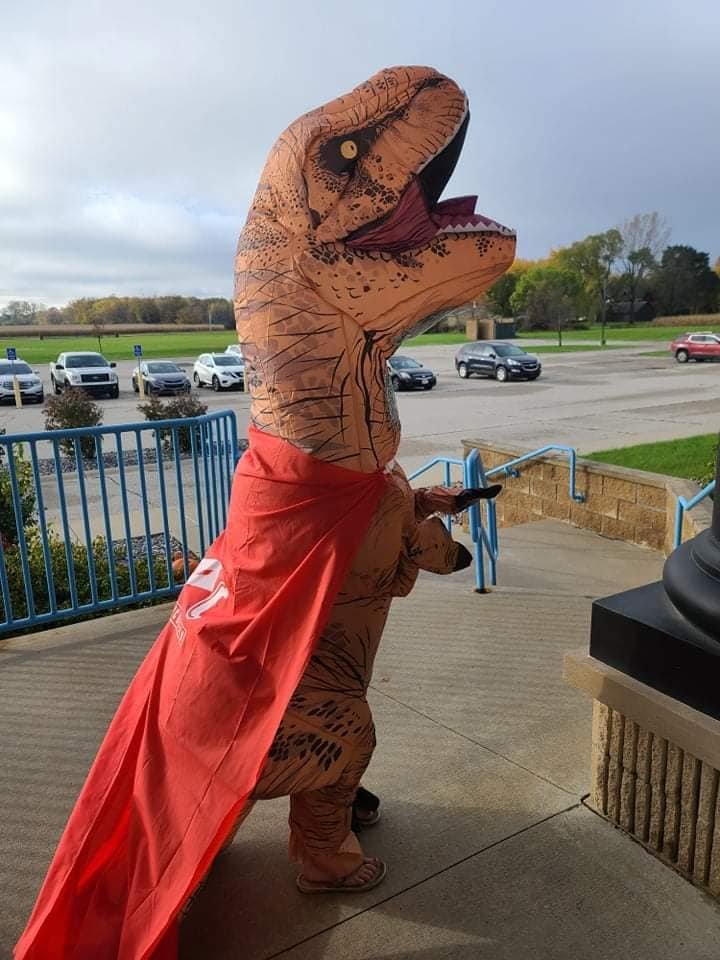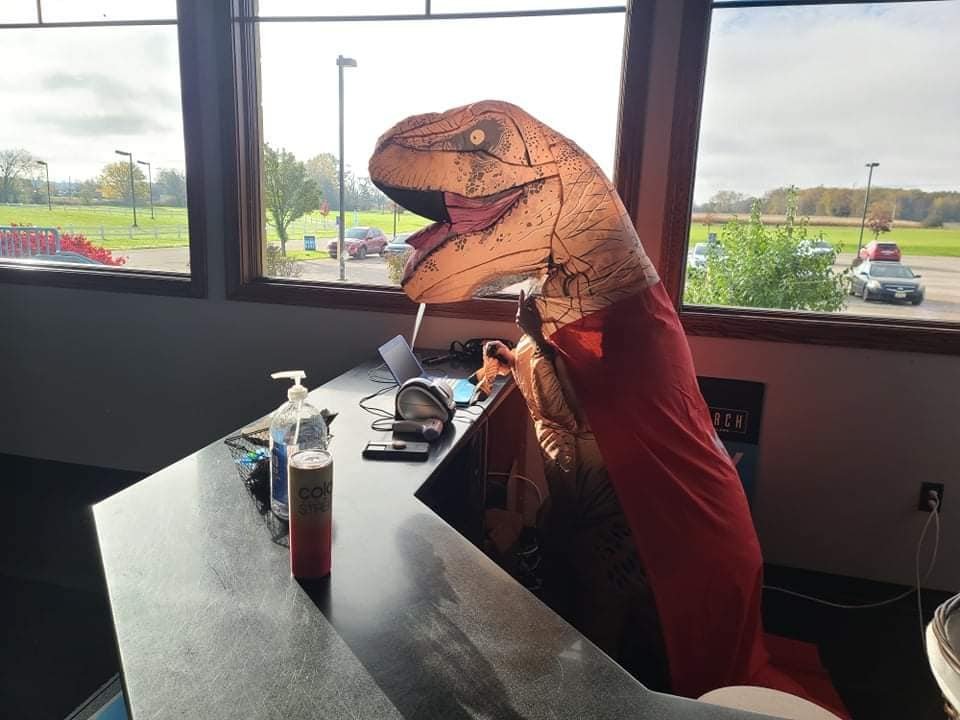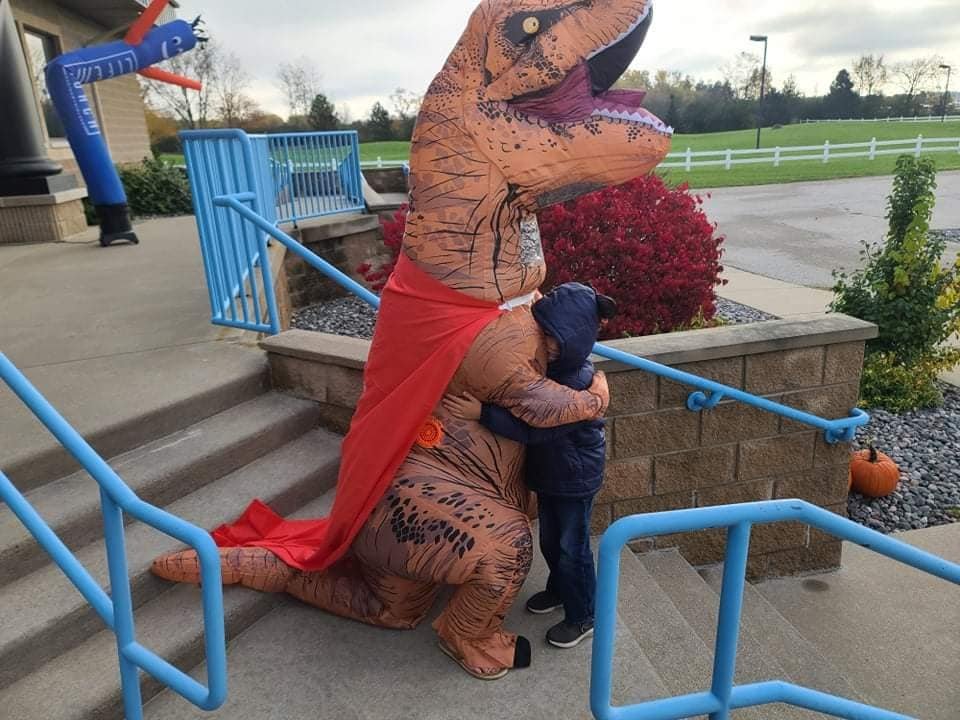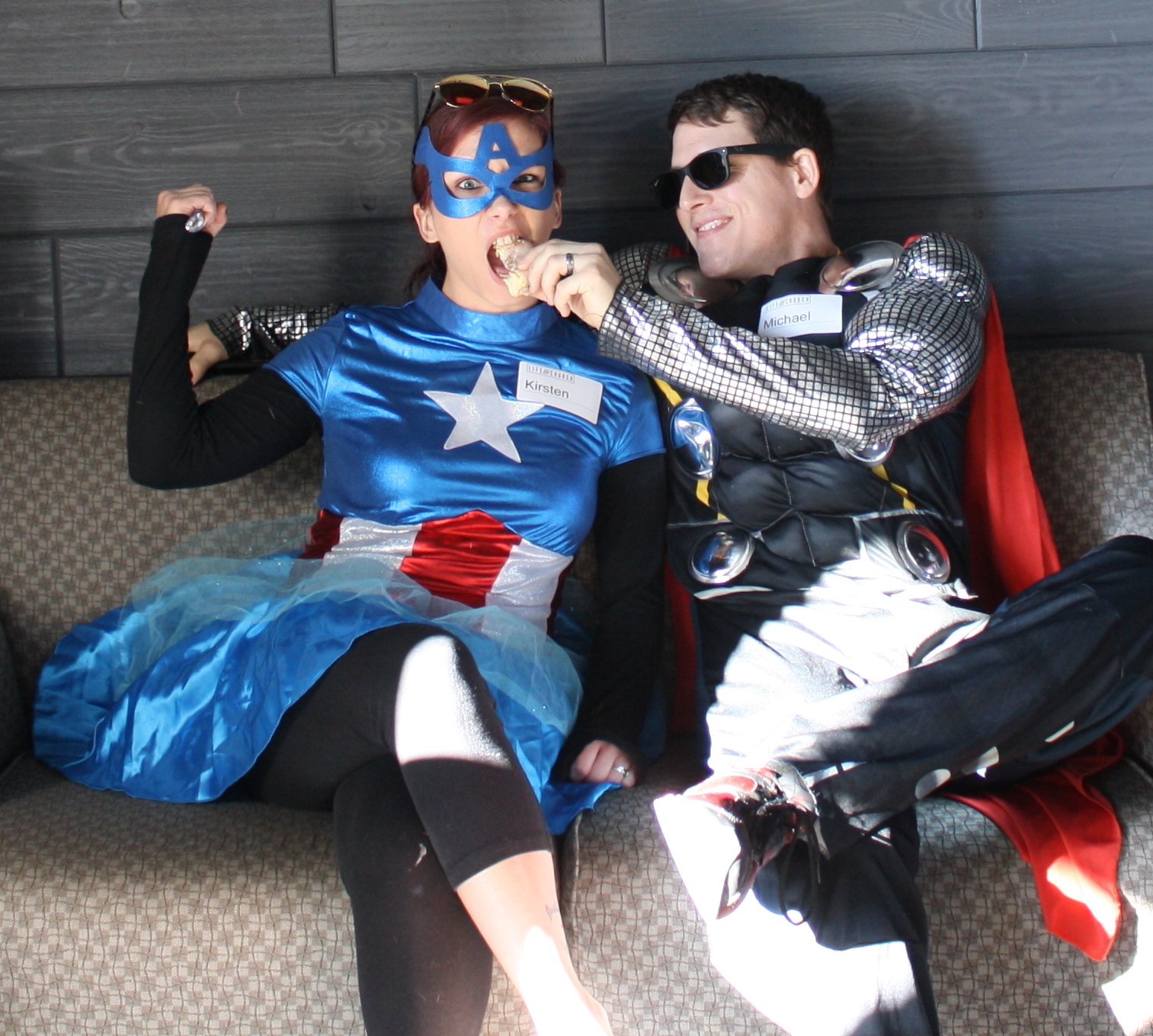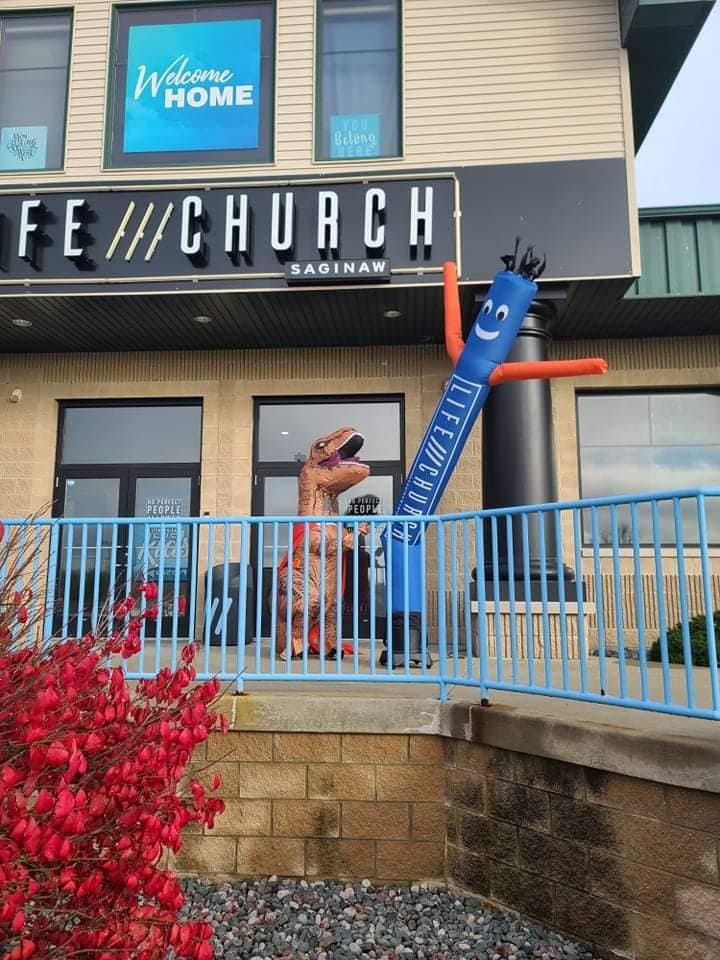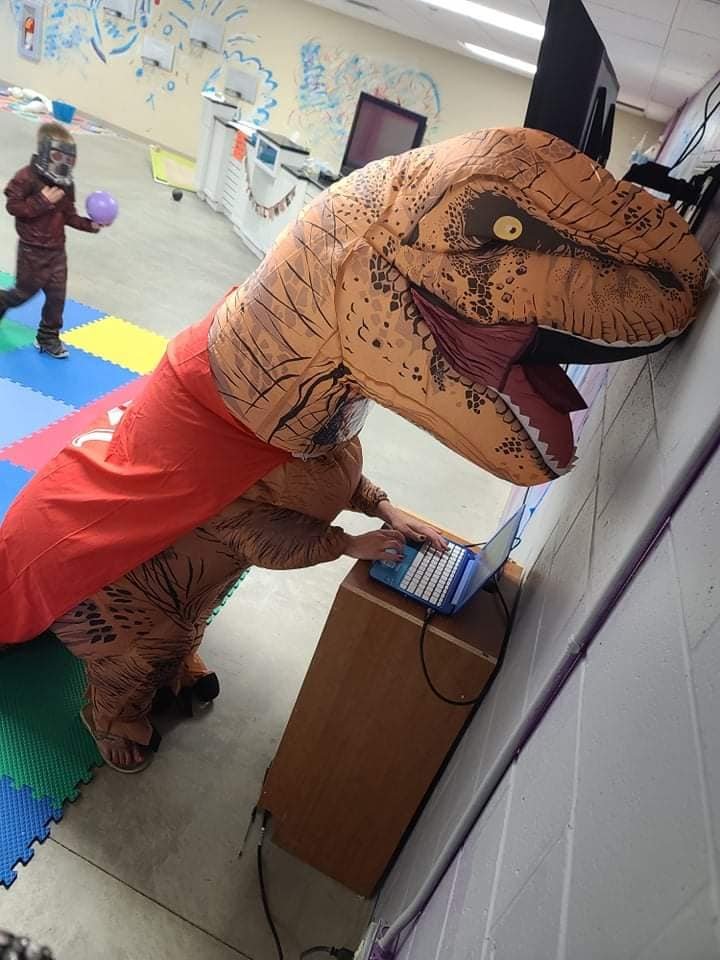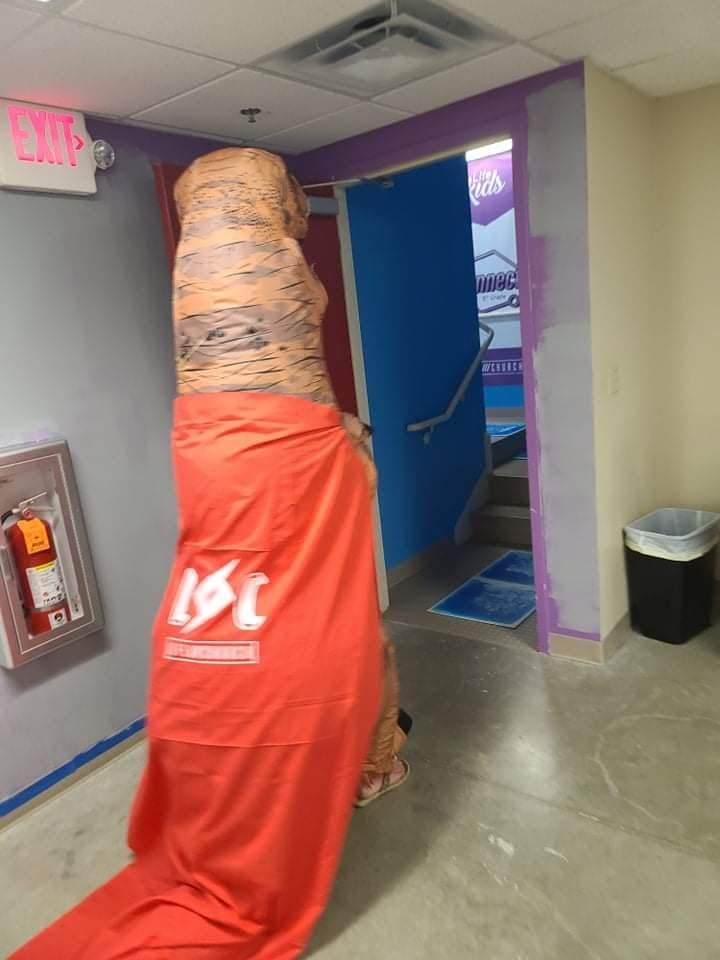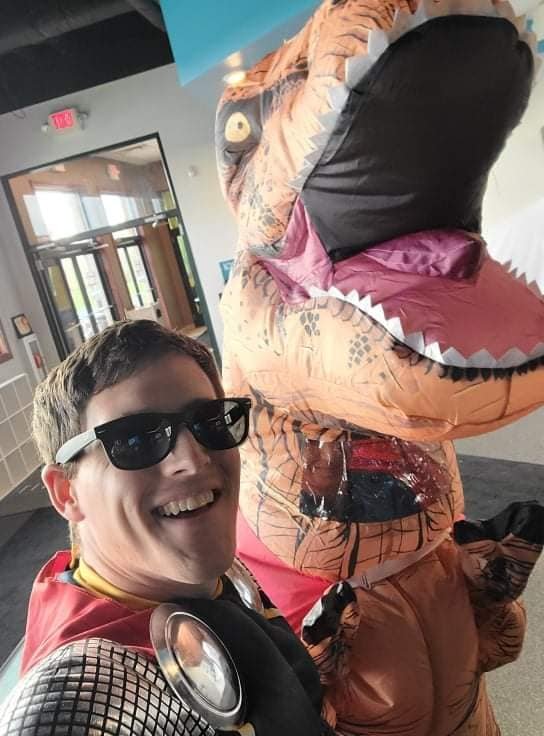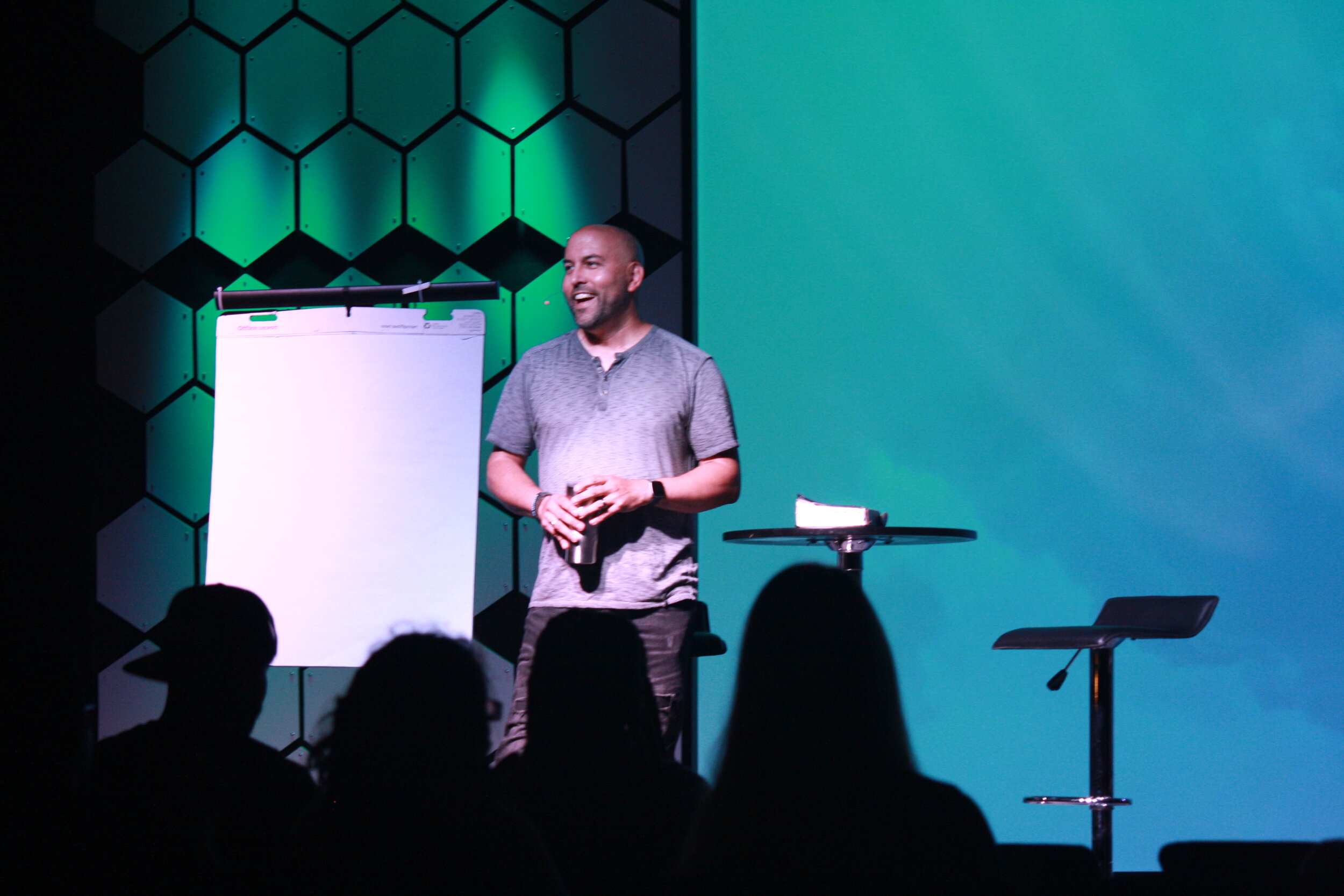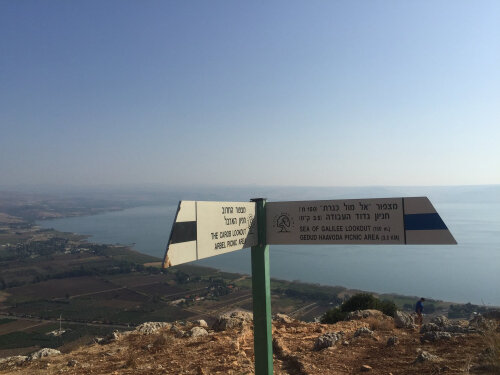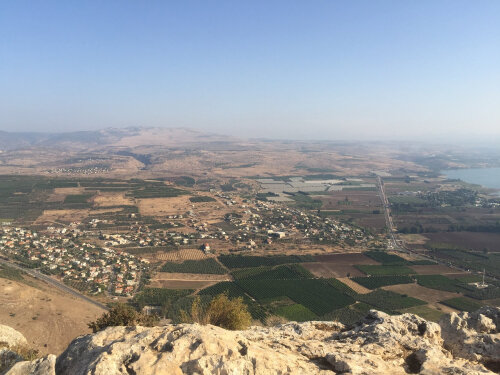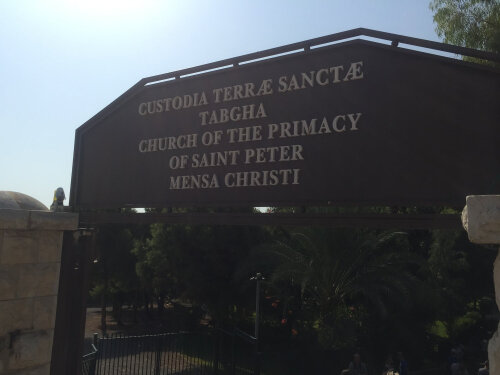Leading Through Change -- When Staff and Members Leave
Notes from Dale O’Shields’ presentation: Leading Through Change -- When Staff and Members Leave
Staffing is a Key Decision
1 Timothy 5: “Do not lay hands on a man suddenly.” Any staff hire is a very important, sobering decision. Be slow to hire.
You want to hire someone who is focused on the TOWEL, not the TITLE. You are here to SERVE.
2. Have a Process in Place for Evaluating Staff and Key Volunteers
You are giving people significant responsibilities; have a system for evaluating:
Character — Not just about morality. Look at their work ethic, faithfulness, integrity.
Competency — Are they all hat, no cattle?
Culture — Do they fit well within your existing culture?
Chemistry — Likeability Factor. Do you enjoy being around this guy?
Calling — Look for the fingerprint of God on the hire of that person.
Capacity for Leadership — Can they grow with the role and the growth of the church? Can they reproduce themself and become a multiplier, not a maintainer?
3. Understand + Accept that some Staff + Church Members WILL have to Transition
Understanding this will save you a lot of heartache.
Think of your church like a bus with stops along the way. What happens at a bus stop? Some people get on and some people get off.
There will be significant transition points as your church grows.
When this happens, remind yourself that this is just all part of the process of church planting.
Don’t lose perspective. Your “loss” may actually be a huge win!
Some folks need to get off the bus.
Why do people leave your church?
Sometimes staff will leave you because the responsibilities have grown beyond their capacity to grow with the role.
They may outgrow the responsibilities. Your job is to always make sure your staff are being challenged.
They may lack the character / competence / chemistry required to stick with it.
They may not want to do the spiritual and emotional work in order to grow.
Unexpected circumstances arise in life. Think seasons. Life happens in seasons.
4. Remember that all Staff and Members need to be held loosely.
Anything you hold tightly you suffocate.
5. Promotions to key leadership roles should be carefully considered through prayer.
Faithful in the little before being faithful with much.
Make sure they have been tested.
This doesn’t always work: people fool you. Potential staff will lie to you to get a job.
Be very careful in giving out titles… You can’t take it back.
It doesn’t feed your ego, it fits your function.
6. Celebrate the Stays and Positively Release the Gos.
For some churches the only time the Staff has a party is when someone leaves. When is the last time you had a party with the people who STAY?
Sometimes God calls you to go but often God calls you to STAY!
Sometimes someone goes and it’s a good thing. Sometimes someone goes and it’s painful. Sometimes people go when they shouldn’t and you can see the truck that’s about to hit them, but they won’t listen to you.
7. Be prepared for + positively process the emotions that will accompany the exit of people.
Loss leads to Grief, which can confuse people. Be prepared for the grief. You love the person, you’ve invested in them for years.
When you feel grief, don’t beat yourself up about it. Allow yourself to experience and feel.
8. Give clear guidelines to departing staff on YOUR expectations regarding communication.
Information Void can crank up a church gossip grapevine: “What’s happening behind the scenes?”
This happens when there is too much of time that passes between their decision and the communication.
It is foolish to allow departing staff to announce their departure.
Provide information to fill any potential void. SOMEBODY is going to tell ‘the story.’ You need to protect the health of your church as it continues moving forward.
9. Expect emotional responses to any staff member’s departure.
Help them process, give them assurance.
10. Learn lessons from departures that can make you and your organization better.
How can we improve for next time?
What can I learn from this?
How can this make me better?
11. Avoid Prolonged Departures.
When someone says they want to leave, let them.
Don’t drag it out or they will drag people down with them.
When they say they want to leave, their heart has already left.
Be generous in their transition.
12. Be appropriately generous toward departing people who leave well.
Err on the side of grace, not pettiness.
Oftentimes people who leave will talk badly about you behind your back. Be gracious.
13. Expect a Honeymoon Period on Social Media at the Departing Person’s New Place.
“This new place is amazing!” Which means your place wasn’t.
At some point real life will kick in and they’ll stop.
Weather their honeymoon. You don’t need it in your spirit.
If it’s getting to you, delete the app.
Social media can feed a failure mentality.
14. Don’t Get Discouraged.
Don’t Think You’re the Only Person This Happens To.
This is the secret: don’t get discouraged. Fight it.
People WILL leave your church.
Staff members WILL betray you.
Don’t give air to fear.
Pruning leads to better fruit and a better future.
Get up and keep going by faith.
Sometimes you have to wait 11 years to see someone who left in a bad way come back in repentance.
WISDOM for DEPARTING STAFF
If you’re leaving a church, get planted somewhere. Don’t wander.
When you get planted somewhere, be a son or daughter of that House.
Be an honorable, loyal, ethical, trusting Christian. Integrity matters. Honor your former pastor. Don’t go bush-league.
If you’re leaving a church, do not play the “God told me” game.
Don’t run from your issues! Your next church won’t change things. Geography doesn’t fix your problems.
Remember whose spiritual platform you have been using and you have been benefiting from. You were LOANED a platform. Never take the power and trust.
Never steal sheep.
Never steal staff. That is unethical behavior.
Fulfill your commitments. Don’t cut and run. That only hurts God’s people.
Leave your assigned area of responsibility stronger, not weaker.
Encourage commitment and faithfulness to the House that you’re leaving.
Watch your words, non-verbals and your actions on the way out…
…because God is.
I Believe in You
Friend,
Rise up!
You are NOT held back by your past mistakes or present hurts.
Not pressed down by the expectations of others or those you place on yourself.
Make CONFIDENCE your stance -- take COURAGE!
Chase your dreams + give your best to stay authentic, fearless, risky and real.
Fiercely pursue the passions He has placed on your heart.
Choose to live in FAITH, not fear.
Go do it!
Embrace your calling.
You are God-commissioned -- specifically selected for His work.
He CHOSE and created you for such a time as this.
You're empowered to BE who you were created to be!
Cheering you on,
Jonathan
///
Amazon Just Shared Its Secret to Success (and You Can Use It Too!)
There is an energy and an optimism in the eyes of a startup team that's nearly impossible to replicate. Despite working ridiculously long hours, sacrificing time, family, money, and pretty much all of the things that most of us hold holy in life, a startup team produces a euphoria that only they can fully understand. If you've been there, you know what I'm talking about.
When it comes to starting something from scratch, the feeling that results is unmatchable. The attitude, the hunger, the passion, the ability to move and adapt instantly, the willingness to take risks, and the sheer energy and enthusiasm you have in a startup is as good as it gets. When you lose that, you lose the ability to grow, and that will be the greatest challenge to success and threat to innovation.
I've often struggled to put a name to the unique chemistry of a startup. Amazon’s Jeff Bezos has, and it captures beautifully all of the trials, tribulations, and magic of the entrepreneurial spirit. He calls it being a day one company. He is so passionate about the importance of staying a day one company, the building he works in is called day one!
According to Bezos, a day one company's obsessive goal should be to avoid becoming a day two company. In his own words, "Day two is stasis. Followed by irrelevance. Followed by excruciating, painful decline. Followed by death. And that is why [for Amazon] it is always day one."
According to Bezos, "Day One" means that Amazon will always act like a startup. To act like a startup, Bezos requires Amazon employees to do these four things:
Be obsessed with the customer
Focus on results over process
Make high quality decisions quickly
Embrace external trends quickly
I read this to mean always be innovating, because the alternative is to go out of business. To Bezos you either act like a startup or die.
Where Jesus Lived + Died: Israel, Day Five
Kidron Valley
The Kidron Valley sits between Mount Moriah (which I am standing in front of in the photo above) and the Mount of Olives.
Abraham would have crossed the Kidron Valley enroute to sacrifice his son Isaac on Mount Moriah.
3,000 years ago David stood in this valley beholding the Jebusite stronghold which would become Jerusalem, the City of David.
Hebrews believe that this valley is also where King David would have been standing when he “looked up” to see the Angel of the Lord standing between heaven and earth (1 Chronicles 21).
When fleeing Absalom, King David escaped through the Kidron Valley and up the Mount of Olives.
A thousand years later, Jesus would often stay with his best friend Lazarus in the suburb of Bethany. When Jesus would head into Jerusalem, He would cross over the Mount of Olives and through the Kidron Valley enroute to the Temple.
The Western Wall
As Jesus predicted, the Roman Empire ransacked Jerusalem and destroyed the Temple in 70 AD.
The only portion that remains standing to this day is a portion of the Western Wall, also known as the Wailing Wall. Jews revere this wall as their holiest spot since it faces where the Holy of Holies would have been (now covered by a Mosque and the Dome of the Rock).
We were not allowed to photograph directly at the Wall, and so we snapped these photos from a ledge above the area before making our way to the Wall for prayer.
Church of the Holy Sepulchre
We visited this historic site built under the direction of Constantinople’s mother Helena in the 4th Century. This building is so ancient that is even boasts graffitti from the Crusaders!
The entryway (pictured here) has remained virtually unchanged since the 12th Century. This site contains where many believe Jesus was crucified and His nearby empty tomb.
You can read more about the Church of the Holy Sepulchre’s history here.
[caption id="" align="alignnone" width="2500.0"]
Helena had this structure built over the site of the Empty Tomb. [/caption]
Walking Through Bethlehem + Jerusalem: Israel, Day Four
Entering Modern-Day Bethlehem
Because of the complexity of today’s Middle East, the town Jesus was born in no longer is found in Israel; it is in the Palestinian Authority.
Trekking into Bethlehem meant passing through sophisticated, heavily-armed border security. How ironic that the birthplace of the Prince of Peace is shrouded in barbed wire and machine guns.
Graffiti
Inside the walls of Bethlehem, the huge security walls are covered in wall art and graffiti.
The plight of the Palestinians is wrapped in religion, culture, and politics.
Very quickly we could see that the economy inside is near-collapse.
The Palestinian soldiers were happy to wave our tour bus through when they realized we were Americans (our Hebrew guide, however, was forbidden to enter Bethlehem).
Church of the Nativity
After a long walk, we finally arrived in Manger Square.
A large Catholic Church was built over the site of Jesus’ birth, one of the holiest sites in Christianity.
This church boasts the world’s longest-running worship service; it’s been perpetually worshiping Christ in one long service for about 1,500 years! Day and night, monks and holy men tend to their altars and worship.
To enter the Church of the Nativity, you literally must stoop low. This architecture is purposeful — all who enter the site of Christ’s birth should do so with great humility and reverence.
Ancient Christianity
Walking inside the Church of the Nativity is like stepping back in time: darkness is everywhere, the scent of incense punches through the air, and every step takes you across ancient mosaic flooring and solid gold paintings from across the centuries.
Three Wise Men
Over the centuries, the Middle East has been conquered by Muslim invaders, Crusading knights, and various other sects and groups.
This site was nearly destroyed by Muslims wanting to eradicate Christianity centuries ago. Legend has it that before torching this church, the invaders came across this giant fresco. Although you can barely make out the painting today, it depicts the three wise from the East who came to worship the Christ child.
The Muslim invaders apparently came across this very fresco, saw the Oriental holy men depicted, and thus decided to spare destroying the site of Christ’s birth.
Jesus was born in Bethlehem near Jerusalem during the reign of King Herod.
After Jesus’ birth a group of spiritual priests from the East came to Jerusalem and inquired of the people, “Where is the child who is born king of the Jewish people? We observed his star rising in the sky and we’ve come to bow before him in worship.”
( Matthew 2 )
Ancient Art
The closer we got to the entrance of the Cave where Jesus was born, the more extravagant, the more fragile and the more ancient the works of art became.
Everything you see that looks gold IS really gold.
High above the descending marble stairway leading into the Cave hangs this solid gold portrait:
This is the Historical Spot where Jesus Entered Our World
This is Where Mary Gave Birth in the Cave
When the time of fulfillment had come, God sent his Son, born of a woman, born under the written law.
Yet all of this was so that he would redeem and set free all those held hostage to the written law so that we would receive our freedom and a full legal adoption as his children.
( Galatians 4:4-5, TPT )
Inside Jesus’ Birthplace
The ceiling is low, the space is cramped, people are crammed everywhere as dimly lit Renaissance paintings peer at us from within the Cave’s blackened walls.
The Site of the Manger
When they arrived in Bethlehem, Mary went into labor, and there she gave birth to her firstborn son.
After wrapping the newborn baby in strips of cloth, they laid him in a feeding trough since there was no available space in any upper room in the village.
( Luke 2:6-7 )
The Church
Back above the Cave, we walked past worship services in progress and marveled at the ancient architecture.
[caption id="" align="alignnone" width="2500.0"]
Look Closely…. Jesus is shushing you! [/caption]
[caption id="" align="alignnone" width="2500.0"]
O Little Town of Bethlehem [/caption]
[caption id="" align="alignnone" width="2500.0"]
The Birthplace of Jesus is surrounded by Mosques [/caption] [caption id="" align="alignnone" width="2500.0"]
Allah (the Moon god) is the focus of the Crescent Moon atop these Mosques in Bethlehem [/caption]
In the distance, Shepherd’s Field
That night, in a field near Bethlehem, there were shepherds watching over their flocks.
Suddenly, an angel of the Lord appeared in radiant splendor before them, lighting up the field with the blazing glory of God, and the shepherds were terrified!
But the angel reassured them, saying, “Don’t be afraid. For I have come to bring you good news, the most joyous news the world has ever heard! And it is for everyone everywhere! For today in Bethlehem a rescuer was born for you. He is the Lord Yahweh, the Messiah.
You will recognize him by this miracle sign: You will find a baby wrapped in strips of cloth and lying in a feeding trough!”
Then all at once, a vast number of glorious angels appeared, the very armies of heaven! And they all praised God, singing:
“Glory to God in the highest realms of heaven!
For there is peace and a good hope given to the sons of men.”
When the choir of angels disappeared back to heaven, the shepherds said to one another, “Let’s go! Let’s hurry and find this Word that is born in Bethlehem and see for ourselves what the Lord has revealed to us.”
( Luke 2:8-15, TPT)
Onward to Jerusalem
And the time that David reigned over Israel was forty years.
He reigned seven years in Hebron and thirty-three years in Jerusalem.
( 1 Kings 2:11, ESV )
Tour of Jerusalem’s Old City
There are three mountains that are referenced throughout Scripture.
They are found here: Mount Zion, Mount of Olives, and Mount Moriah.
In Hebrew thought, three mountains = three letters in the Hebrew word for GOD.
Zion Gate protects the City. It was specifically designed for archers about 500 years ago by the Turks.
[caption id="" align="alignnone" width="2500.0"]
The walls are pock-marked with the bullet holes from past conflicts. [/caption]
The Upper Room
“And he will show you a large upper room furnished and ready; there prepare for us.”
( Jesus in Mark 14:15, ESV )
This is the place where Jesus and His disciples had their Last Supper.
Tradition says that the Upper Room was built above King David’s Tomb.
It originally had a rooftop (Jesus said, “Come, let us ARISE…”)
This is where the 11 disciples prayed for 40 days after Jesus ascended into Heaven.
Peter also preached on Pentecost from the roof.
Mount Moriah and the History of Jerusalem
According to Rabbinic tradition, the Mount (now covered by the golden Dome of the Rock by Muslims) is the site where God formed Adam from the dust of the earth.
Abram came to Mount Moriah 4,000 years ago in Genesis 22:
After these things God tested Abraham and said to him, “Abraham!” And he said, “Here I am.” He said, “Take your son, your only son Isaac, whom you love, and go to the land of Moriah, and offer him there as a burnt offering on one of the mountains of which I shall tell you.”
The stone (housed to this day under the Dome of the Rock) Abram used for the ram sacrifice is remembered as the foundation of the Jewish nation.
Solomon built the first temple on Mount Moriah.
450 years later Jerusalem was destroyed by the Babylonians.
Alexander the Great took Jerusalem for 200 years, followed by the Roman Empire.
In 70 AD, the Romans destroyed the Temple, leaving only a remnant of the Western Wall (known today as the Wailing Wall, the holiest site in Judaism). Israel ceased to be a nation and would not rise again for nearly 1,900 years.
In 320 AD, Helena (mother of Emperor Constantinople) came from Rome and destroyed all the existing pagan Roman temples. Helena replaced them with churches.
In 800 AD, Muhammad was born.
50 years after Muhammad’s death, a Calyph had a dream of Muhammad on a flying horse sailing from Saudi Arabia to the sacred stone on Mount Moriah. This led to armies of Muslims invading and destroying all the Christian churches. Muslims erected the Dome of the Rock on Mount Moriah.
Years later the Crusaders came and destroyed all mosques and built churches.
A Muslim leader eventually arose - Salahadin - who defeated the Crusaders due to the heat. He destroyed all the churches and built mosques.
500 years ago the Turks came to reestablish churches.
And in 1948, Israel was reestablished as the Jewish homeland.
Where Jesus Prayed: Israel, Day Three
Day Three began on the shores of the Sea of Galilee, one of the world’s greatest locations of beauty.
I can almost imagine during creation how God scooped out this tranquil sea with His pinky finger, thinking of how the Son would enjoy three years of ministry along it’s shores.
MOUNT ARBEL
Jesus pursued a robust, daily communion with the Father:
“Jesus went up on the mountain by himself to pray. When evening came, he was there alone...” (Matthew 14:23)
” One of those days Jesus went out to a mountainside to pray, and spent the night praying to God.” (Luke 6:12)
The geography of Galilee has not changed in the past two thousand years. With certainty, scholars have identified Mount Arbel as Jesus’ secret prayer location.
Standing where Jesus had so often spent time with the Father was deeply moving.
From the top of Mount Arbel, Jesus could survey His entire mission field. Capernaum, Magdala, the Sea of Galilee... They are all right there.
In the photo above you can see a man-made dome. On just the other side is the location where Jesus fed the 5,000.
PETER’S PRIMACY
Jesus always humbled Himself. He would leave the high places to reach people in the low places.
Jesus demonstrated this every time He came down Mount Arbel. He also showed His love for others after His resurrection outside Jerusalem, when Jesus travelled north to pursue Peter.
After famously denying Christ three times at Jesus’ darkest moments, Peter must have thought he had blown it.
When Jesus’ friends failed Him, He didn’t shame or lecture them. Jesus cooked them breakfast!
“Afterward Jesus appeared again to his disciples, by the Sea of Galilee...
Early in the morning, Jesus stood on the shore...” (John 21)
“As soon as Simon Peter heard him say, “It is the Lord,” he wrapped his outer garment around him (for he had taken it off) and jumped into the water.
The other disciples followed in the boat, towing the net full of fish, for they were not far from shore, about a hundred yards. When they landed, they saw a fire of burning coals there with fish on it, and some bread.
Jesus said to them, “Bring some of the fish you have just caught.” So Simon Peter climbed back into the boat and dragged the net ashore. It was full of large fish, 153, but even with so many the net was not torn.
Jesus said to them, “Come and have breakfast.” None of the disciples dared ask him, “Who are you?” They knew it was the Lord.
Jesus came, took the bread and gave it to them, and did the same with the fish. This was now the third time Jesus appeared to his disciples after he was raised from the dead.”
(John 21:7-14)
THE DEAD SEA
Finally we began the southern journey toward the Dead Sea and Jerusalem.
In the photo below, you can see the ancient cliff where Jesus drove a herd of demon-possessed swine into the sea (Mark 5:13, Luke 8:33).
The Dead Sea was amazing.
After being warned not to swallow the water (it could be deadly due to the richness of the think minerals), we all jumped in.
You literally float due to the heaviness of the mineral-rich waters. It is hard to describe what it feels like!
ABOUT JONATHAN HERRON
I am the founding pastor of Life Church, recognized in 2019 as the fastest-growing church in Michigan and 11th fastest-growing church in America.
I am focused on strategic leadership and engaging teaching, all fueled by a gnawing passion for reaching people far from God.
My unique ministry approach has been featured online in Time Magazine, USA Today, The Detroit News, MLive and The Washington Times.
Married twenty-three years to my high school sweetheart, I have five children plus a wiener dog with a nervous bladder.
The Gates of Hell + Homebase for Jesus: Israel, Day Two
CAESAREA PHILIPPI
In Matthew 16, Jesus of Nazareth led His disciples on a 3 day journey (on foot) to the far northern border of Israel.
Caesarea Philippi was a Roman center of Pagan worship. Imagine Daytona Beach Spring Break in college mashed with New Year’s Eve in Times Square and throw in sex acts with goats and infant burnings. That’s Caesarea Philippi in the days of Jesus.
When you read the Scriptures, geography matters. Jewish rabbis liked to point to things as object lessons in their teachings. That is what Jesus was doing in Matthew 16.
When He brought His followers to this cave (which has remained virtually untouched over the past 2,000 years), He pointed out this very spot that was nicknamed by the locals: the Gates of Hell.
Now when you read Jesus’ words in Matthew 16:18, you can see how it all takes on a deeper meaning: If Jesus starts something, He WILL complete it (Philippians 1:6)!
This is view Jesus and the disciples saw as they looked out from the Gates of Hell.
Why Here?
Why did Jesus begin this movement called the Church here?
Why not in Jerusalem?
Because in Matthew 16, Jesus is essentially telling us: “I’m not building Church for Church People; I’m doing it for THEM — the Romans engaged in wicked pagan worship. The local church is the PERFECT place for IMPERFECT people!”
Later in Matthew 17, Jesus journeys further north to Mount Hermon where Jesus is transfigured. The high place of Mount Hermon is capped in snow, which Hebrews understand to represent the holiness of God. God says, “I’ll come DOWN to YOU.”
Jesus then journeys DOWN Mount Hermon to Capernaum, which in Hebrew means, “Comforter.” Jesus took the path south that eventually leads down to the Dead Sea.
In everything Jesus said and did, the Son of God humbled Himself. The rest of the gospels show Christ saying, “Now that I have declared the Church, I will go and DIE for her.”
Israelis planted these trees in Galilee over the spot where Jesus fed the 5,000.
THE TOWN OF JESUS
The headquarters for Jesus during His earthly ministry was this tiny sea-side town, where Jesus preached in the local synagogue and stayed in the home of Peter. It is remarkable and powerful to walk along the very streets where Jesus Christ walked.
Ancient Synagogue where Jesus of Nazareth preached.
Capernaum rests at the northern edge of the Sea of Galilee.
These are the very shores where Jesus walked and called Peter, James, and John to leave EVERYTHING and follow Him.
This is where Jesus stood in Matthew 4:18-22.
PETER’S HOUSE
Jesus spent a lot of time in these ruins — the ancient remains of Peter’s house.
A futuristic Catholic Church that looks like something out of The Jetsons rest above Peter’s house, with a glass floor that rests directly above where Jesus healed Peter’s mother-in-law.
This is where Matthew 8:14-15 happened in world history.
CAPERNAUM’S SYNAGOGUE
Jesus went through all the towns and villages, teaching in their synagogues, proclaiming the good news of the kingdom and healing every disease and sickness.
When he saw the crowds, he had compassion on them, because they were harassed and helpless, like sheep without a shepherd.
Then he said to his disciples, “The harvest is plentiful but the workers are few. Ask the Lord of the harvest, therefore, to send out workers into his harvest field.” (Matthew 9:35-38)
SEA OF GALILEE
Day Two of our journey through the Holy Land ended with a boat ride across the Sea of Galilee.
It gave me goosebumps as I saw what Jesus saw while He was walking on these very waters.
ABOUT JONATHAN HERRON
I am the founding pastor of Life Church, recognized in 2019 as the fastest-growing church in Michigan and 11th fastest-growing church in America.
I am focused on strategic leadership and engaging teaching, all fueled by a gnawing passion for reaching people far from God.
My unique ministry approach has been featured online in Time Magazine, USA Today, The Detroit News, MLive and The Washington Times.
Married twenty-three years to my high school sweetheart, I have five children plus a wiener dog with a nervous bladder.

